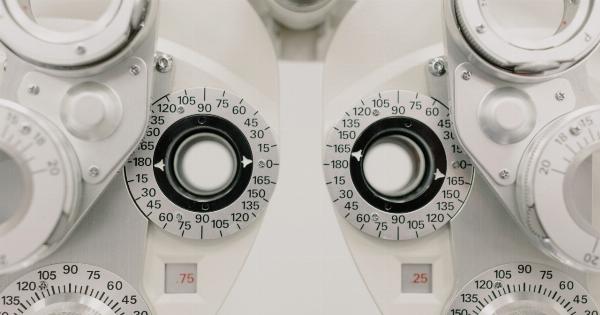Droopy eyelids, also known as ptosis, is a condition where the upper eyelids sag or droop over the eyes. It can occur in one or both eyelids and can affect people of all ages.
This condition not only affects aesthetics but can also impair vision in severe cases. Here, we dive into the science behind droopy eyelids, exploring its causes, symptoms, and available treatment options.
Understanding Eyelid Anatomy
Before delving into the science of droopy eyelids, let’s first understand the basic anatomy of the eyelids. The eyelids are thin folds of skin that cover and protect the eyes.
They play a crucial role in keeping the eyes moisturized and shielded from external irritants. The upper eyelids are lifted by the levator muscle, which is responsible for eyelid elevation.
Causes of Droopy Eyelids
There are several factors that contribute to the development of droopy eyelids. Some of the common causes include:.
Age
As we age, the skin loses elasticity, and the muscles supporting the eyelids weaken. This natural aging process results in the gradual sagging of the eyelids.
Genetics
Genetics can also play a role in the development of droopy eyelids. If your family members have a history of ptosis, you may be more prone to developing the condition.
Eye Trauma
An injury or trauma to the eye area, such as a direct blow, can damage the muscles or nerves responsible for eyelid movement, leading to drooping of the eyelids.
Neurological Conditions
Some neurological conditions, such as Bell’s palsy or myasthenia gravis, can affect the muscles controlling eyelid movement, causing them to weaken and result in droopiness.
Underlying Medical Conditions
Certain medical conditions, including diabetes, thyroid disorders, and Horner syndrome, can contribute to the development of droopy eyelids.
Symptoms of Droopy Eyelids
The primary symptom of droopy eyelids is the noticeable sagging of the upper eyelids. However, depending on the severity and underlying cause, individuals may also experience additional symptoms such as:.
Impaired Vision
In severe cases, droopy eyelids can obstruct the visual field, making it difficult to see properly. This can significantly impact daily activities such as reading, driving, or even recognizing faces.
Eye Fatigue
Constantly straining to lift the drooping eyelids can lead to eye fatigue and discomfort.
Eyestrain Headaches
Eye strain caused by compensating for drooping eyelids can result in frequent headaches.
Eye Irritation
Since droopy eyelids can disrupt the normal blinking mechanism, the eyes may not be adequately lubricated, leading to dryness, redness, and irritation.
Treatment Options for Droopy Eyelids
The treatment of droopy eyelids depends on the underlying cause and the severity of the condition. Some of the commonly recommended treatment options include:.
Eyelid Exercises
Mild cases of droopy eyelids may benefit from performing eyelid exercises to strengthen the muscles responsible for eyelid elevation.
These exercises involve repeatedly lifting and lowering the eyelids or placing gentle finger pressure on the eyelids to encourage muscle activation.
Medication
In certain cases of droopy eyelids caused by underlying medical conditions, medication may be prescribed to manage the symptoms or treat the underlying cause.
For instance, if the droopiness is due to a thyroid disorder, thyroid medication may help alleviate the condition.
Blepharoplasty
Blepharoplasty, also known as eyelid surgery, is a common surgical procedure performed to correct droopy eyelids.
During this procedure, excess skin and fat are removed, and the muscles supporting the eyelids are tightened to restore a more youthful and lifted appearance.
Frontalis Sling Surgery
Frontalis sling surgery is another surgical option for correcting severe droopy eyelids. This procedure involves attaching a synthetic material or using a small section of the patient’s own tissue to lift the eyelids and improve their function.
Conclusion
Droopy eyelids, or ptosis, can be caused by various factors such as aging, genetics, trauma, neurological conditions, or underlying medical conditions.
While mild cases may be managed with exercises or medication, surgery is often the most effective solution for severe droopiness. Consultation with an ophthalmologist or a plastic surgeon specialized in eyelid procedures can help determine the best course of treatment for individual cases.
With the advancing medical field, there are several safe and effective options available today to restore the youthful and functional appearance of droopy eyelids.




























